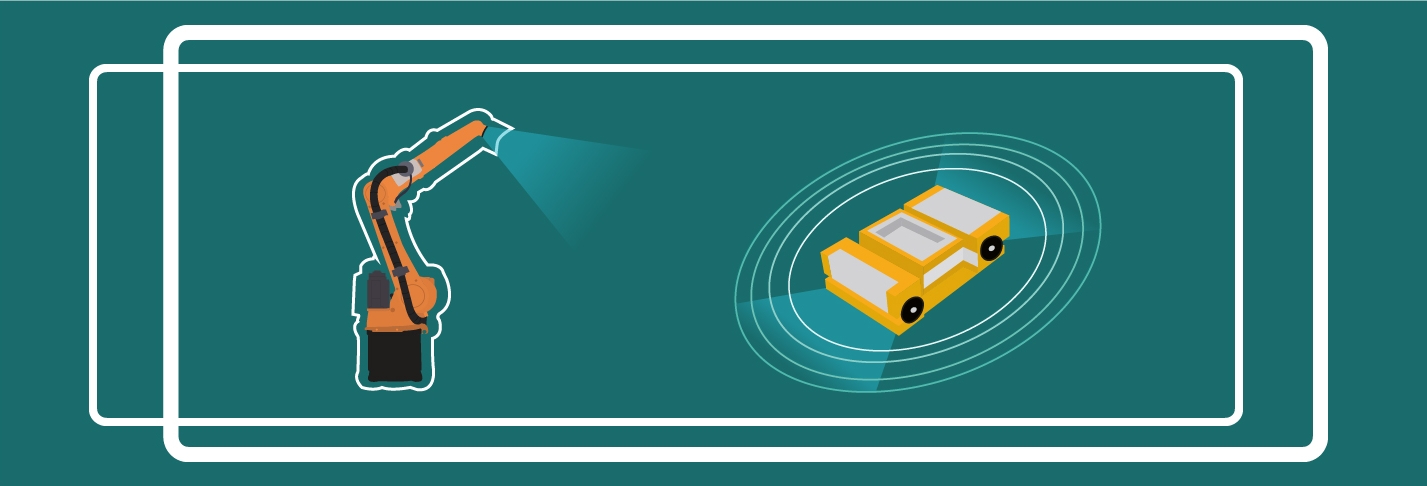Sensor technology plays an enormously important role in the automation of logistics processes and especially in robotics. Cameras, LIDAR and 3D sensors are the key enablers for making processes efficient and as automated as possible. At the same time, they enable safe interaction with humans within these processes in the context of so-called human-technology interaction (MTI).
The logistical fields of application range from process support in incoming and outgoing goods, through environment detection for Automated Guided Vehicles (AGVs), to fully automated production by means of robot-assisted manufacturing.
The "Robotics and Cognitive Systems" department offers customized solutions and approaches from a single source for all these fields of application: In incoming goods, quality checks can be carried out automatically using cameras and 3D sensors. During the onward transport of goods to the warehouse or to production, 3D sensors detect the environment of AGVs and enable a collision-free and fast material flow. In production and goods issue, the error rate in picking and production processes can be reduced through the sensible use of cameras and 3D sensors.
In the context of research and industrial projects, our department has also already gained practical experience in the application of 3D sensor technology in autonomous driving in the logistics yard: For the company KAMAG Transporttechnik GmbH & Co. KG from Ulm, an object recognition software was developed that calculates the exact position and dimensions of truck trailers and swap bodies. This software enables driverless and fully automated maneuvering of these objects by an autonomous truck.
In our development processes, we are increasingly relying on simulation and artificial intelligence (AI) methods. Simulation accelerates the development process because algorithms can be evaluated and validated in advance on the basis of simulated sensor data. AI plays to its strengths in the processing of large volumes of data and object detection in image and sensor data. In this way, object detection algorithms can be developed quickly and in a targeted manner for a wide range of use cases.
Let us develop a solution for your use case together!
 Fraunhofer Institute for Material Flow and Logistics IML
Fraunhofer Institute for Material Flow and Logistics IML